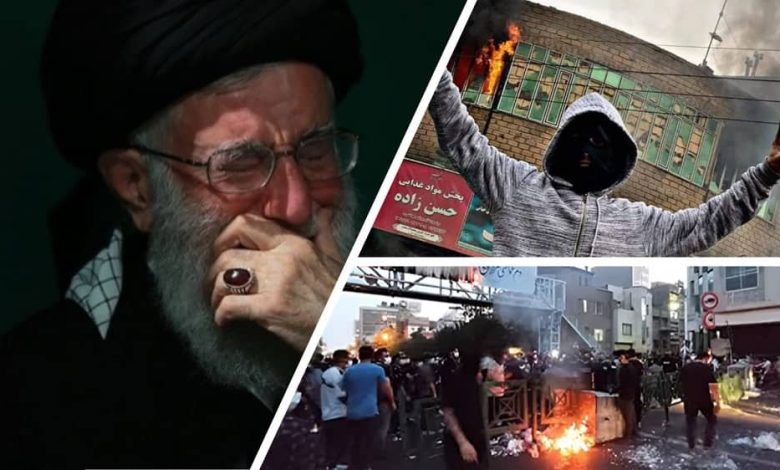Iran’s Regime on the Brink: What’s Behind the Infighting?

Written by
Shahriar Kia
The Iranian regime’s power struggles have boiled over, prompting Supreme Leader Ali Khamenei to caution officials about the dire repercussions of their internal conflicts on April 22. What is driving this escalating turmoil?
After the November 2019 uprising, which posed a significant threat to his regime, Khamenei recognized that even a hint of discord among his ranks could result in the downfall of the ruling theocracy. Consequently, he initiated a process of “power consolidation,” starting with eliminating rival faction candidates during the 2020 sham parliamentary elections and handpicking his preferred parliamentarians. In June 2021, Khamenei appointed Ebrahim Raisi as president despite the latter’s reprehensible human rights record. Shortly thereafter, the Supreme Leader appointed Gholam Hossein Mohseni-Eje’i, another notorious criminal, as the head of the judiciary.
“A very important strategy is the cooperation between heads of three branches. They all should cooperate and synthesize. The constitution has created a perfect opportunity for them to work together; if so, they can overcome every problem. I advise the heads of the three branches not to block each other’s path and instead to pave the way for one another,” Khamenei said in his speech on the occasion of Eid-El-Fitr.
By speaking of cooperation, Khamenei tacitly warned the regime’s Majlis (parliament) to stop complaining about the socio-economic failure of Raisi’s government. Due to Raisi’s bogus claims and consistent failure, there have been growing calls in the regime’s parliament for his impeachment.
Thus, Khamenei’s speech spurred Raisi to make yet other bogus claims. “I can assure your imminent excellency that we, in the three branches, increase our efforts and cooperation to address people’s problems. As you named this year, we will control inflation and increase production while avoiding any sidelines,” he said.
Who is Ebrahim Raisi, a candidate in Iran presidential election and an executioner in 1988 massacre
Mohammad Bagher Ghalibaf, the Majlis Speaker, remained silent while Eje’I responded after 48 hours, only to implicitly refer to Raisi’s failure to address the country’s financial calamity. “Today, the country’s top issue is the people’s livelihood and controlling inflation while increasing production. The three branches should work together, as the Supreme Leader underlined in his remarks,” he said on April 24.
So, what lies at the heart of this calamitous crisis? Despite Khamenei’s continued emphasis on the matter, the leaders of the three branches of the regime are at an impasse on fundamental issues afflicting the regime and how to address them effectively. What is the crux of this disharmony, and why are they falling short of finding common ground?
The current predicament is not merely a political or economic crisis, nor an internal predicament on the “fringes,” but rather an existential crisis, threatening the very survival and continuity of the regime.
It’s worth highlighting that Khamenei’s primary aim in cementing his regime was to counter the looming uprisings. The trio of criminals he handpicked as the leaders of the regime’s three branches have not been tasked with alleviating the country’s economic predicament, as the actual source of the present economic crises lies in the regime’s entrenched corruption and mismanagement, particularly those of Khamenei himself. Their mandate was to suppress a restive society.
The countrywide uprising that erupted in September and persisted despite the regime’s attempts to suppress and distract it has exposed its vulnerability and resulted in Khamenei’s defeat. The mounting internal conflicts within the regime can be attributed to the ongoing large-scale protests and the likelihood of a downfall that has agitated the ruling theocracy.
The regime has undoubtedly reached an impasse. The so-called “consolidated system” has been unable to quell the protests, and heightened suppression may give rise to stronger waves of dissent, while avoiding oppression may lead to further protests.
As the regime continues to flounder, and the Iranian people resolutely strive to topple it, the global community must choose the right side of history and endorse the Iranian people’s aspiration to create a secular and democratic republic. This can be achieved by acknowledging the people’s right to self-defense and intensifying pressure on the regime by designating its Revolutionary Guards (IRGC) as a terrorist entity and refraining from negotiating with the failing ruling theocracy.

